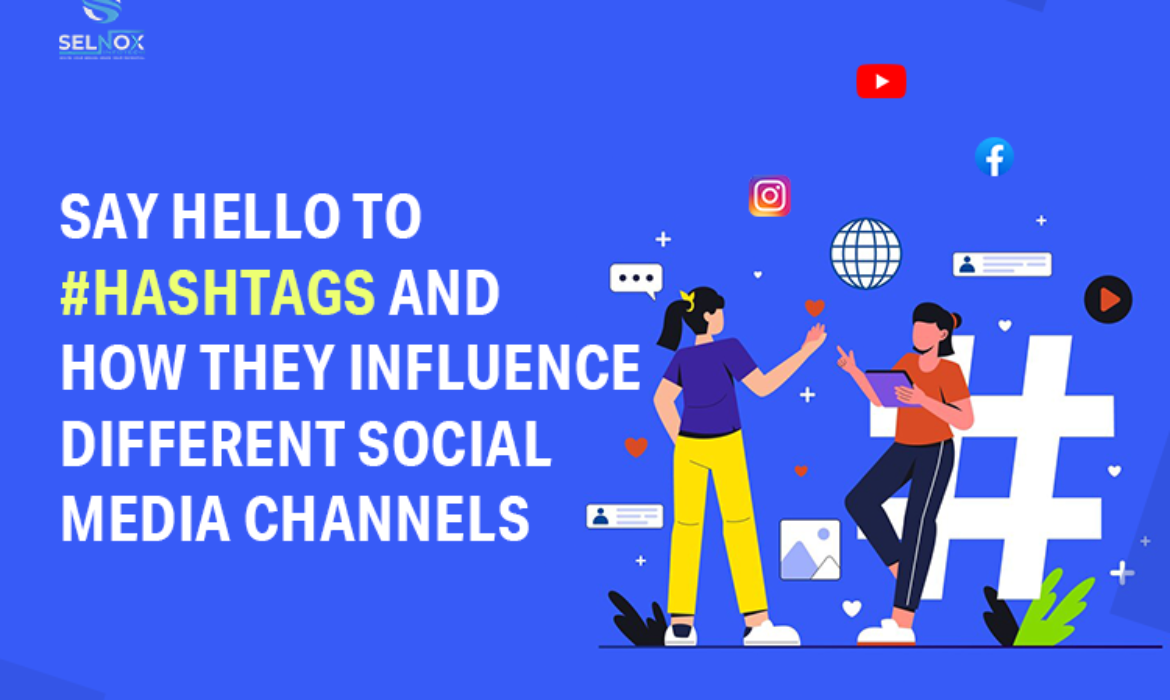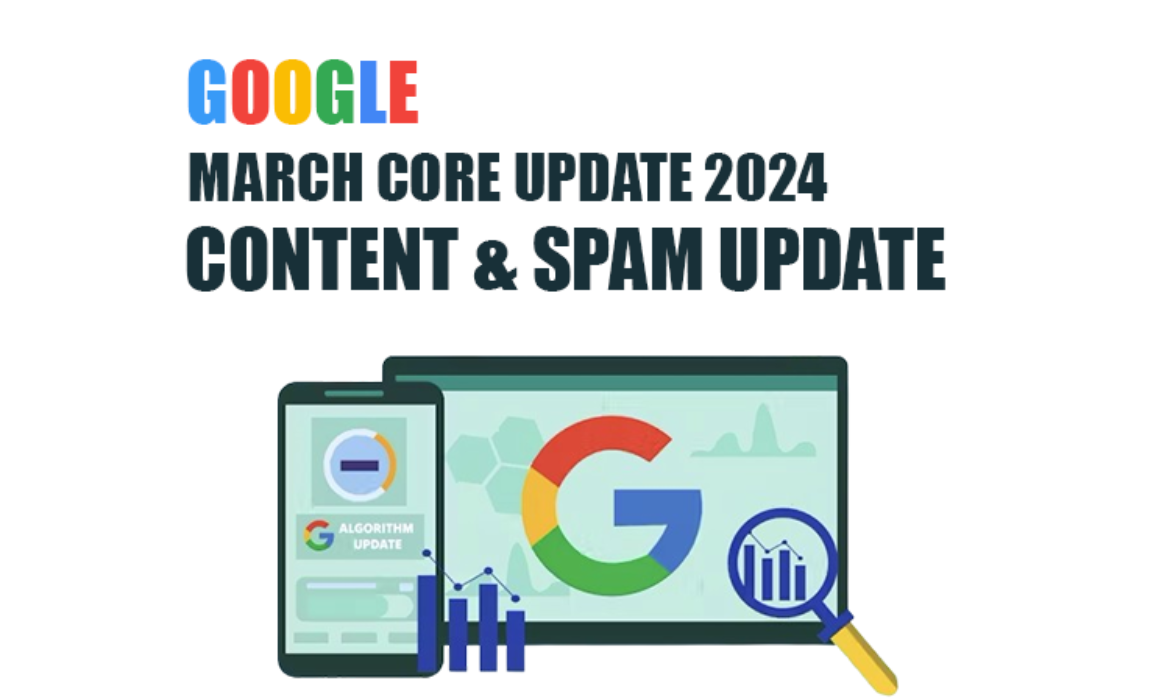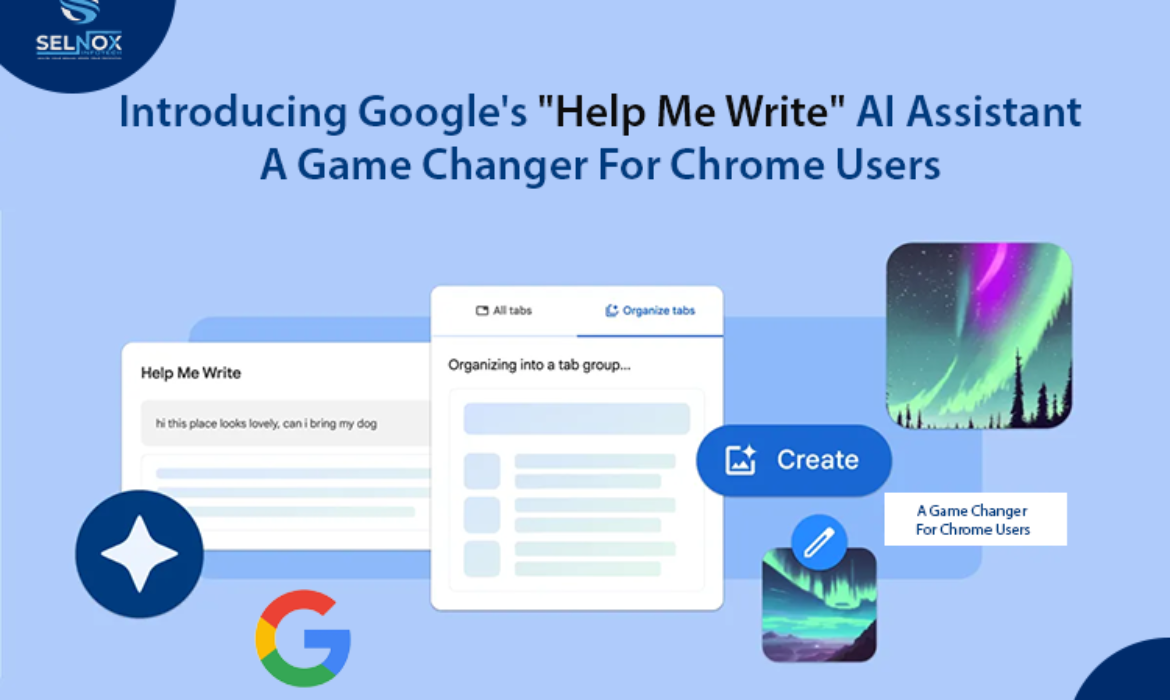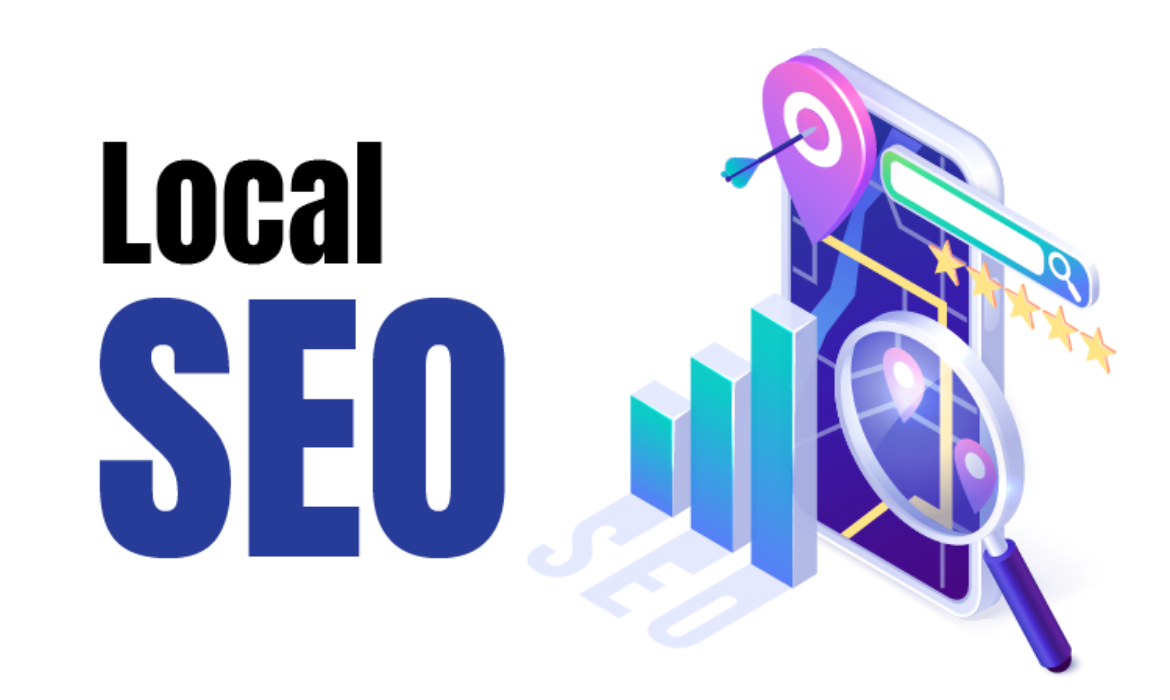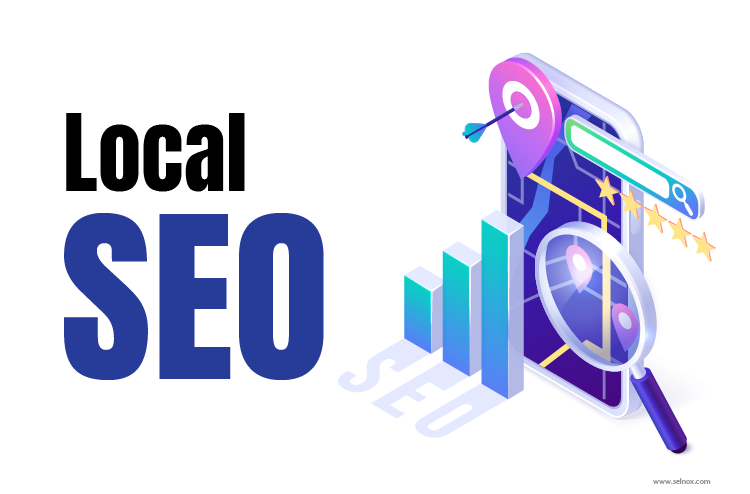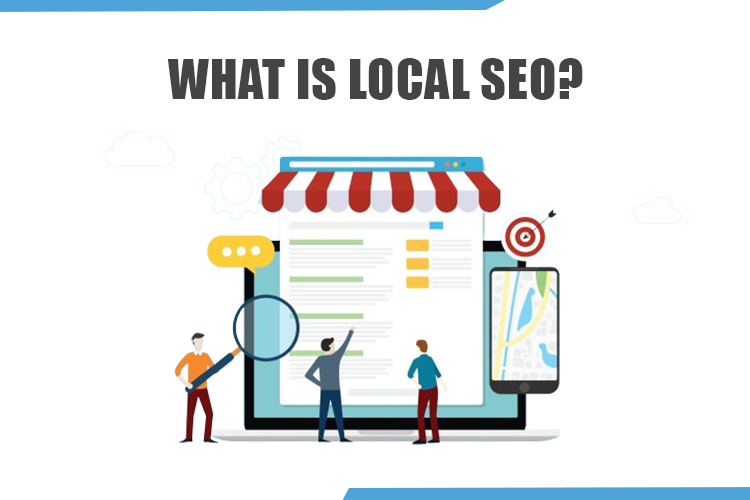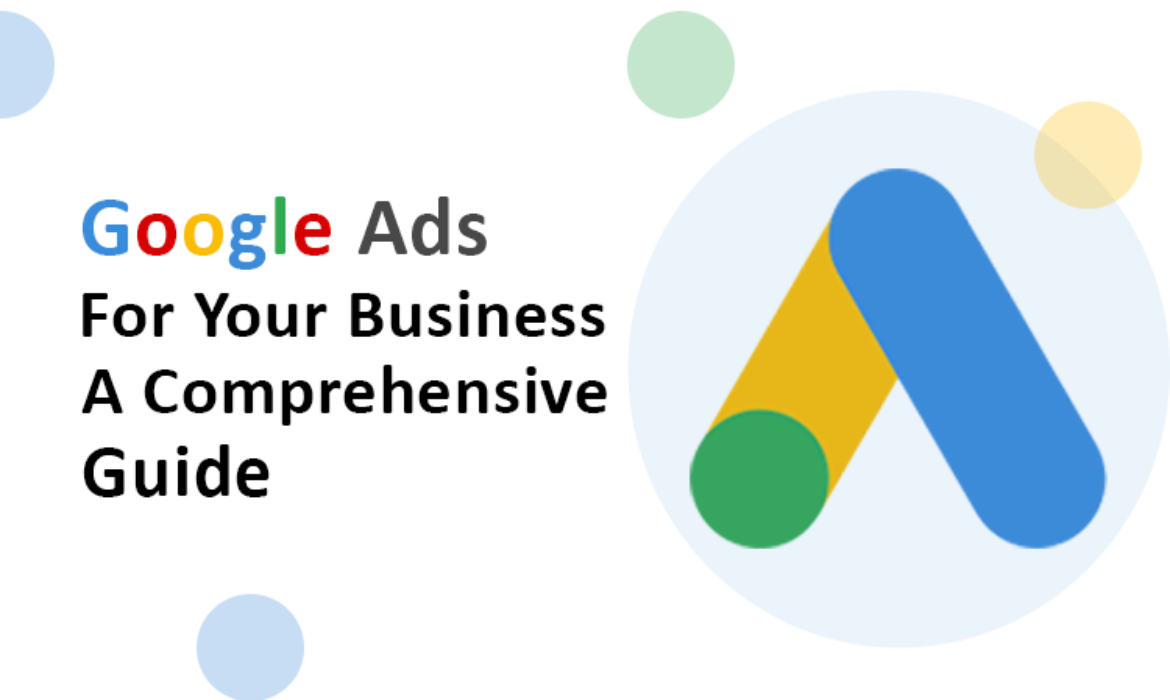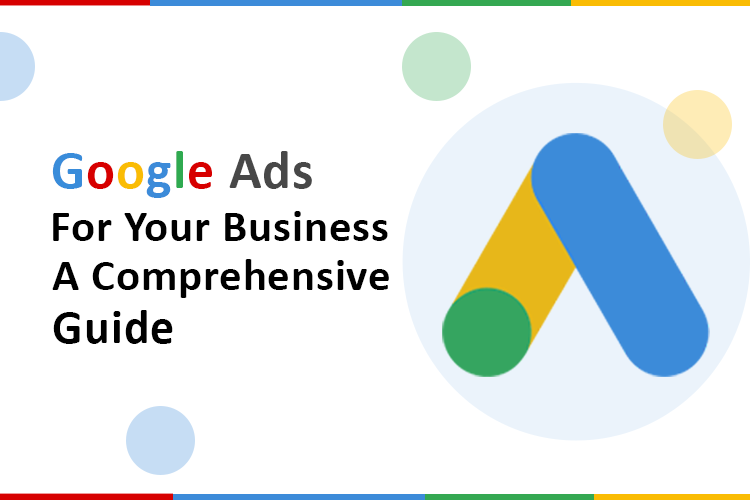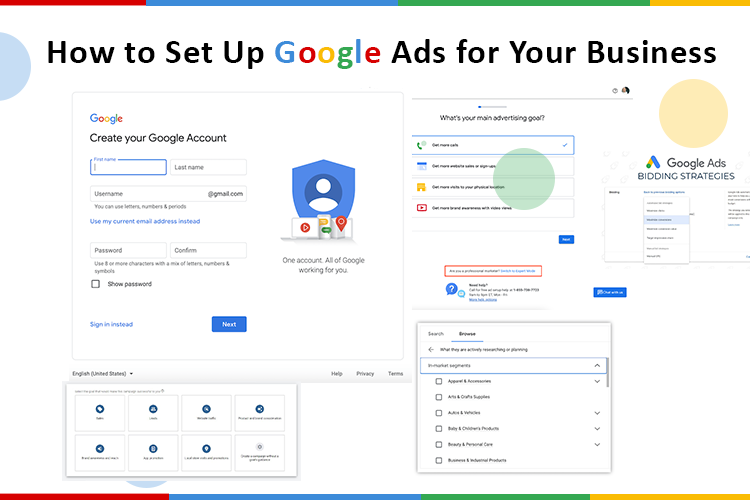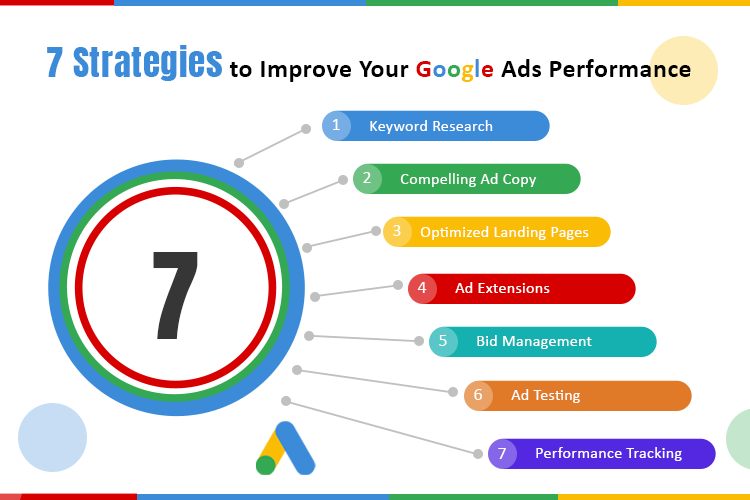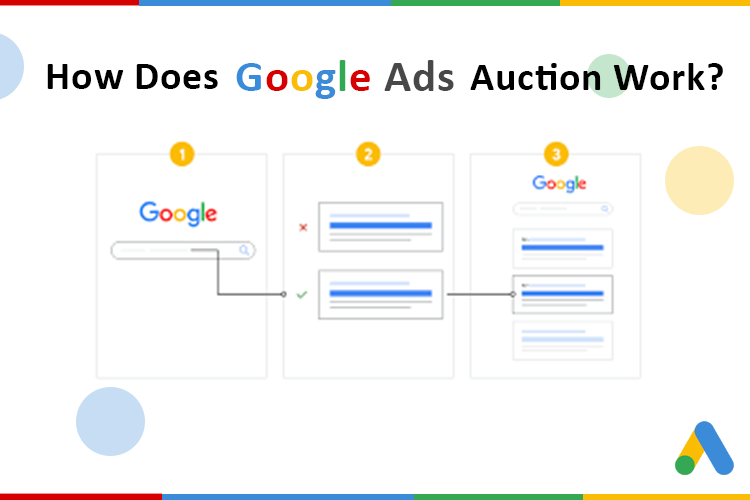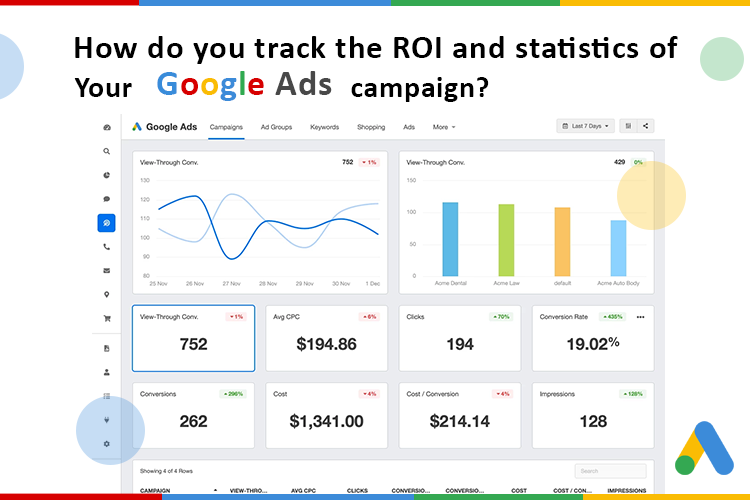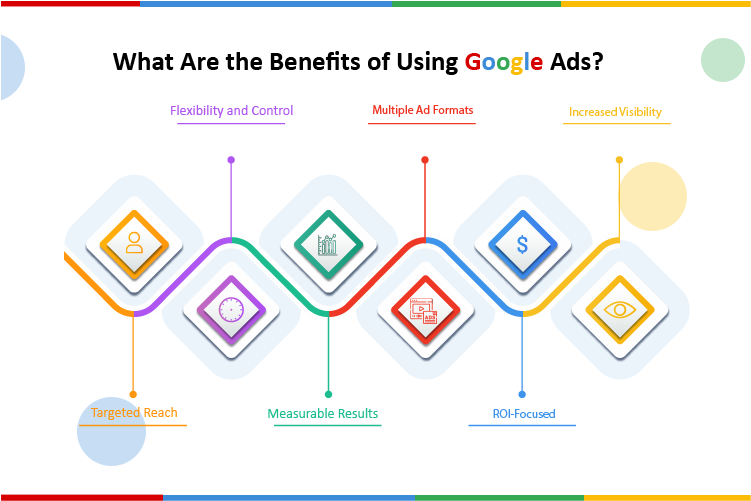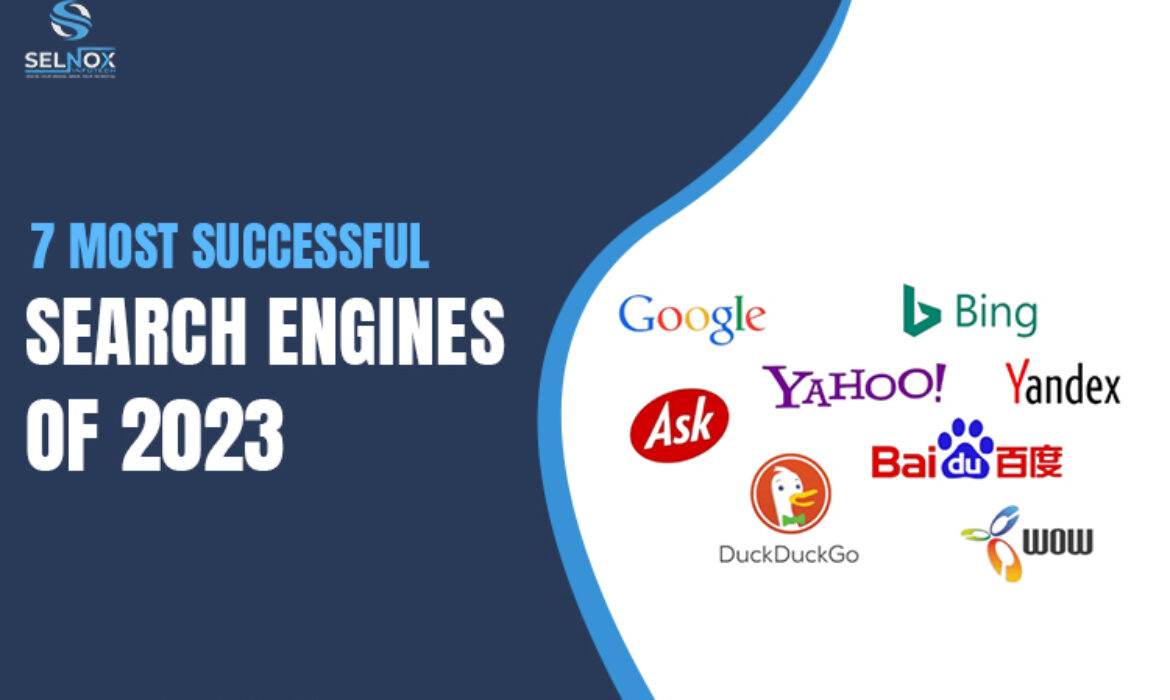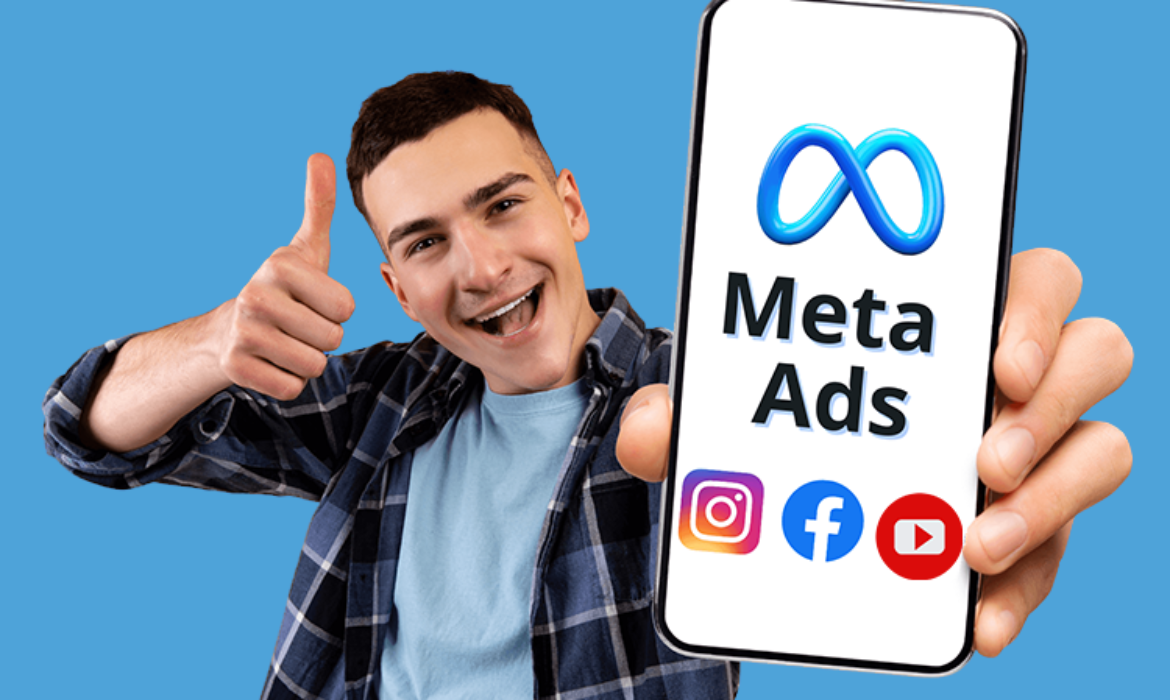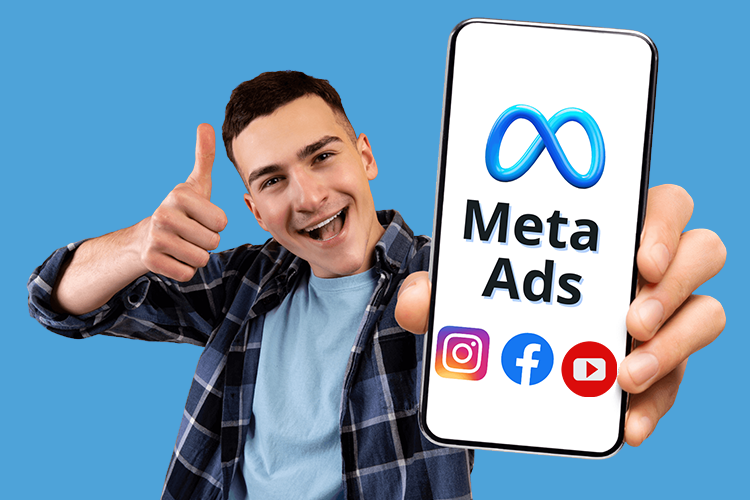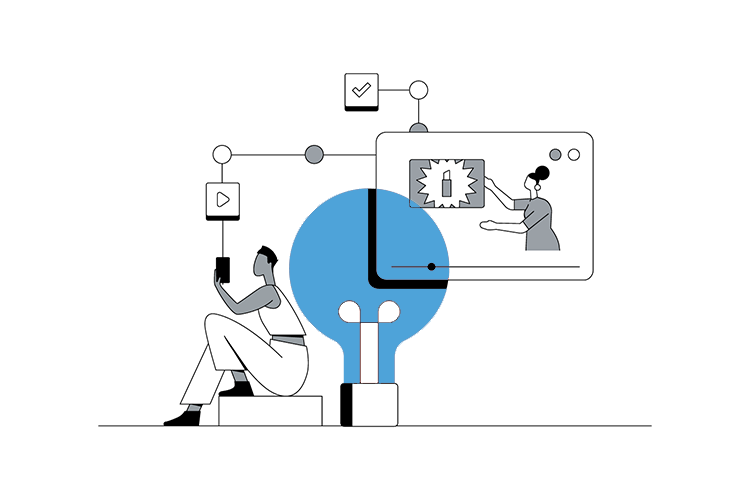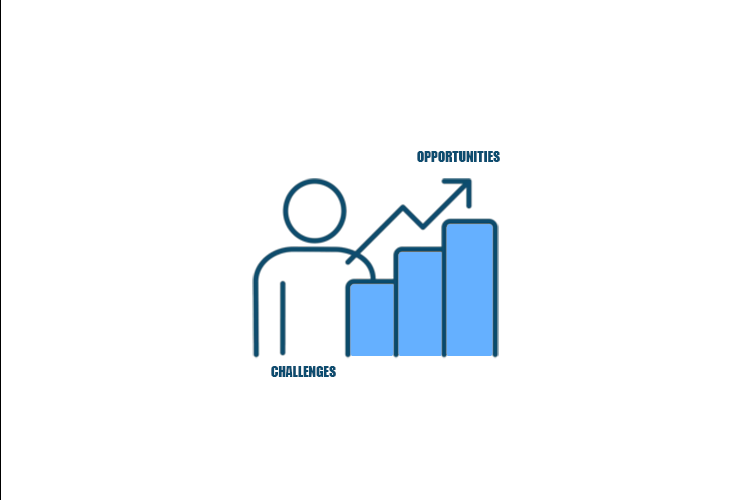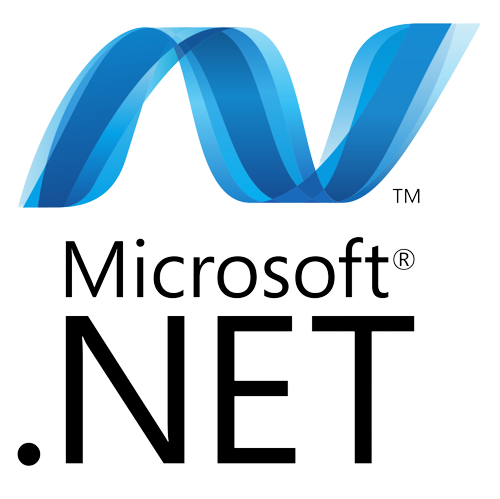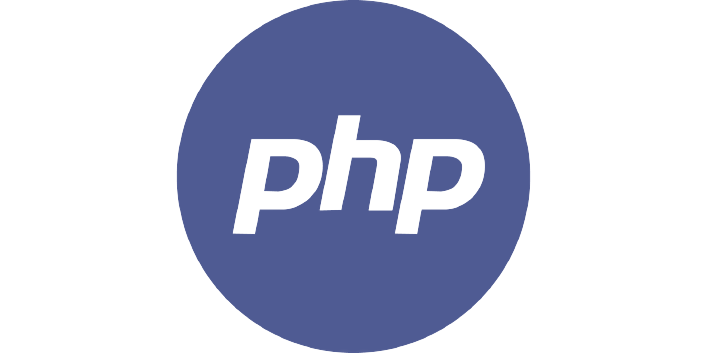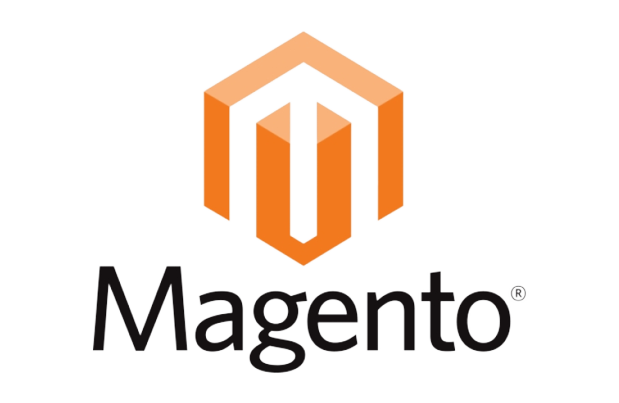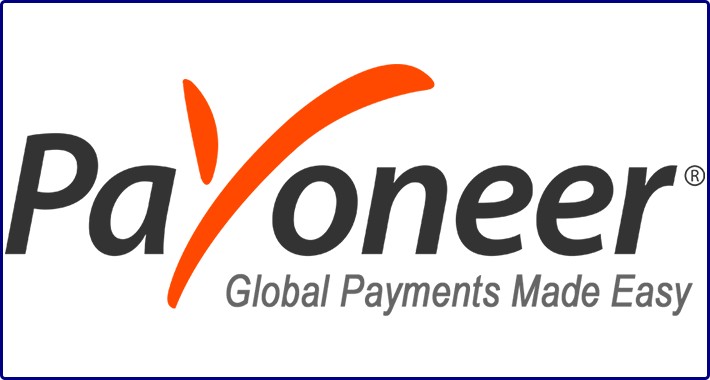Harness the Power of Hashtags for Social Media Success
If you wish to promote your brand on Social media, drive engagement and generate brand awareness, hashtags should be your go. The sign # defines hashtags, as we know.
Help with making one’s content discoverable in order to get the audience’s attention.
Say Hello To Hashtags And How They Influence Different Social Media Channels
Inception Of Hashtags
For the first time, hashtags were used on the social media platform Twitter (now known as X), but later, they became pretty common on other platforms like Facebook, Instagram, and TikTok, or “tags” on the newcomer threads. On many of these platforms, especially IG (Instagram), these hashtags act as a search engine for users to find information and ask questions.
Mastering hashtags gives one a powerful way to reach audience engagement and increase one’s social impact by not spending any money but researching the latest trends and making use of them.
When used correctly, it is these hashtags that give context to your social media posts, help people who are interested in your topic find your brand, and thereby expand your influence and followers.
Meaning Of Hashtag
A hashtag is either a word or a keyword phrase that is preceded by the symbol #. It is made use of within a post on social media and enables the audience who might be interested in your topic to find it when they search for a particular keyword or a hashtag. It helps with drawing the audience’s attention to your posts and encourages any forms of interaction.
For example, if you are throwing a bachelorette bash and you post those pictures, you could use hashtags like #bridetobe #Bridesbrewcrew
What Can You Do With Hashtags?
When you are making use of hashtags, you spell it out without leaving any spaces in between, for instance # using hashtags. It can include numbers but does not make use of any symbols or punctuation.
The Hashtag can be placed either at the beginning, middle, or end of one social media post or a comment, and it allows for what you have written to be indexed by the social media network. With such a strategy, people who are not your followers or fans can still find your content.
Hubspot states that” 15% of consumers prefer to search on social media rather than search engines while 31% use them to find answers to their questions.”
What Does A Hashtag Imply On Social Media?
It may sound simple to place a hashtag in front of your keyword, but some essentials have to be kept in mind when you are trying to be found by hashtags. Remember, using hashtags can make a difference to the social media strategy when done at the right place in the right way.
Tips For Using Hashtags
- Please do not get carried away using a hashtag for every couple of words. In most cases, 1-3 hashtags are considered enough to generate impact.
- Hashtags should be kept short and simple rather than using a list of words in one single tag.
- Do not choose hashtags that are either too clever or obscure. If you use a hashtag that no one will search for, you won’t be able to benefit your marketing that way.
- Using hashtags that are specific and detailed will provide better results than those that are broad or generic.
- Hashtags can be used to attract your target audience and research competition. When you search using hashtags, you will uncover relevant content related to your topic.
- Do not try to use hashtags in every post. Rather, use these in places where they add value and are likely to stimulate conversation and generate interaction.
- Try focusing on hashtags with low or medium-volume searches in order to hit the right set of audiences. You do not want to attract spambot, trust me.
Why Are Hashtags Important?
Hashtags are important for social media as they enable one’s content to be found by the right people. Using the relevant hashtags aids in giving context to one’s content and driving traffic so you can boost views, likes, shares, and comments. The secret is to find the right set of hashtags that align with your content and, at the same time, appeal to your users.
How To Find Effective Hashtags?
There is a thin line between the hashtags that are too general and the hashtags that are too complicated to find. You can start by determining the hashtags are effective for you by paying attention to the hashtags that the influencers are using in your niche.
The chances are that you have a fair idea about who are the influencers that are capturing the attention of your audience, but if you are brand new to the niche, then how do you find them?
For a particular niche, influencers are those people whose voices are most trusted and listened to, like celebs, bloggers, and YouTubers. You can also use B2B influencers to create a marketing impact; the only thing that one needs to make sure is that they are relevant to your business.
Research Tools To Find Hashtags
One of the tools to identify the influencers like BuzzSumo. With the help of such a tool, you will be able to locate the top content, bloggers, publications, and writers under your niche. So follow the top-notch influencers and identify the hashtags they make use of regularly in order to tap into the relevant keywords and trends.
Once you locate the relevant influencers, you should use an influencer tracker tool to keep a list of important factors such as their social channels used, specialty, and relevance to your brand.
Rite Tag: It offers instant hashtag suggestions in order to provide real-time engagement.
Hashtagify. me: This is a tool for finding hashtag popularity and trends.
Keyhole: It provides a free search function and real-time data based on a range of factors.
All Hashtags: it creates hashtags for a range of social media platforms.
Keyword tool: It helps you to search for IG (Instagram) hashtags based on a keyword
Points To Note
Always search for keywords related to your content on social media platforms in order to see what hashtags come up.
Make sure to use social listening tools in order to understand what users are talking about and any trends that you could relate to your brand.
Designing A Hashtag Strategy
- Try to choose specific hashtags whenever possible because the more specific you get, the more likely you are to attract a targeted set of audience.
- Although not required, capitalize letters at the front of each word to give context to your post and show what you are trying to communicate.
- Pay attention to how and in what quantity your competitors are using hashtags and the kind of response they generate.
- Know your audience well and customize hashtags according to different social media platforms.
How To Use Hashtags On Twitter
One or two hashtags per tweet is enough. Ask followers to retweet when using a couple of hashtags can generate more engagement.
Keep researching trending hashtags. The use of hashtags on X will enable your post to be accessible when people search for your tag.
How To Use Hashtags On Facebook
Do not use many hashtags; a maximum of one or two is considered optimum.
You can find the relevant hashtags by simply typing the keyword into the search bar.
Check out your top-performing posts, and reposting them with the relevant set of hashtags will prove to be helpful.
How To Use Hashtags On Instagram
You can use 10 or 11 relevant and popular hashtags in stores, reels, and posts.
Popular hashtags, location hashtags, niche hashtags, content-related hashtags, and branded hashtags work well on IG as a combination.
The maximum number of hashtags that can be used on Instagram posts goes up to 30.
Make use of a search box to check out what hashtags influence, or the competitors are making use of in order to engage on Instagram.
This platform is considered the best platform for multiple hashtags and uses a wide variety of them in posts, photos, comments, reels, stories, etc.
How To Use Hashtags On Pinterest
The use of specific and relevant hashtags describes the content in the pin. This enables your content to be found, particularly if you use Pinterest for business.
How To Use Hashtags On Tiktok
Clickable hashtags help in categorizing content and it features with other relevant videos.
Using hashtags on TikTok helps to increase the reach and helps the TikTok algorithm to decide which users actually see your content on all the important “For you” pages.
Keep an eye on the Discover page to see what’s trend, as hashtags keep changing with time and trends.
A mix of popular and niche hashtags is advised in order to generate maximum reach.
How To Use Hashtags On Linkedin
1-3 hashtags are considered good for LinkedIn. Using hashtags can enable the posts to reach people other than your network.
Let’s say you have 600 LinkedIn connections. Posting with a hashtag like #PPCMarketing enables you to reach not just those 600 connections but triple the number and reach the external audience, which drives up post engagement and credibility.
How To Use Hashtags On Threads
This newbie in the social media market is picking up the trends of hashtags among users. To tap into the power of hashtags, threads have launched tags to help categorize the posts and help with discovery. The tags work differently from Instagram because instead of showing up as a hashtagged work, it gets converted into a blue-inked hyperlink.
Typing “#” into a post pops up a card with the topic you are trying to tag or similar ones. Beneath that, each topic comes with a count of related posts like IG.
Hashtags are a great way to communicate with your followers, increase engagement, and attract new customers, so keep doing the hit-and-trial run for hashtags to understand what works and what doesn’t work for your brand.
For more such information, stay connected with selnox.com
Google’s March Core Update 2024: Content & Spam Update
Google is now unleashing multiple measures whose objective is to improve the quality of its search results commencing today. Google is going to release the March 2024 Google Updates core update as well as the March 2023 spam update. When it comes to Google’s overall core ranking system, Google’s helpful content system has been incorporated into it.
In addition to this, Google has announced several new as well as updated spam policies, which will commence enforcement through automated algorithms and manual actions.
Bigger than Before - the March 2024 Core Update
It is today that Google has started to roll out its first core update of the year, and also the first algorithm update of the year is the March 2024 core update.
Elizabeth Tucker, Director of Product and Search at Google, told Search Engine Land, “This update will help reduce the unhelpful content in the Google search by 40%”.
We expect that the combination of this update and our previous efforts will collectively reduce low-quality, unoriginal content in search results by 40%,” Tucker wrote.
This rollout of the March 2024 update can take up to 1 month. Multiple systems will have to be updated and released during such an update.
This update, when compared to the previous core updates, is going to include enhancements to a number of components of the overall core system. This current march update is going to have a number of updates within it. As the update impacts several systems within the core update, Google will be pushing out updates to those systems in the coming weeks.
Chris Nelson from the Search Quality team at Google is of the opinion that “The March 2024 core update is “more complex update than our usual core updates,”
He added, “Google made changes to multiple core systems”.
The reason why Google is enhancing its core ranking systems is to provide more helpful results using a variety of innovative signals and approaches.
In fact, since Google is updating multiple core systems, “there will be more fluctuations in rankings than with a regular core update, as different systems get fully updated and reinforce each other,” Nelson added.
Google held that this update has refined how it understands which web pages are likely to be “unhelpful, have a poor user experience or feel like they were created for search engines instead of people.” This “could include sites created primarily to match very specific search queries,” Google said.
Helpful Content update now to be a part of the core updates
With the help of the March 2024 core update, Google will stop announcing new helpful content updates since the helpful content system has been incorporated into the core update system.
The last helpful content update, September 2023 helpful content update was a large-level update which impacted a considerable number of sites. Positively, some of the sites impacted by it will see relief from this March 2024 core update, but it is hard to comment on the same at this point.
But it is not just the helpful content classifiers that are the only systems part of the March 2024 core update. In fact, Google said that the working process for the March 2024 core update started along with the 2022 helpful content update.
What is to be done if the rankings drop?

The advice that Google has given for those who have been adversely affected by a core update in the past is as follows:
- As such there are zero specific actions to take in order to recover. A negative rankings impact may not signal anything wrong with your pages.
- Answer the list of questions mentioned here in order to evaluate your content quality.
- Wait for another core update. You may see some improvement between the core updates, but the biggest changes will occur after another core update.
In short, content should be written for the people and not be ranked in the search engines.
“There’s nothing new or special that creators need to do for this update as long as they’ve been making satisfying content meant for people. For those that might not be ranking as well, we strongly encourage reading our creating helpful, reliable, people-first content help page,” Nelson explained.
March 2024 spam updates
Google even announced the release of new spam updates, which it is calling the March 2024 spam update and the spam policy updates, in order to complement the release of the March 2024 core update.
Two of these spam updates are going to result in both automated as well as manual actions this week. The site reputation abuse spam update will go into effect in two months, starting from 5th May to 5th May 2024.
Scaled content abuse search spam
The scaled content abuse search spam is considered as an update to the old spammy automated generated content policy which now goes beyond just the spammy auto-generated content. It now includes any method of producing the content at a scale for search engine ranking.
Google said that producing the content at scale in order to boost the search rankings, whether with automation, people, or a combination, is against its rules and regulations.
- “This will allow us to take action on more types of content with little to no value created at scale, like pages that pretend to have answers to popular searches but fail to deliver helpful content,” Google wrote.
What are the examples of the pages that pretend to have the answers but fail to deliver? Tucker explained that those are the pages that start by stating they will answer your question, then lead you on the low-quality content and never end up giving you the answer to your questions:
- “Our long-standing spam policy has been that use of automation, including generative A.I., is spam if the primary purpose is manipulating ranking in Search results. The updated policy is in the same spirit as our previous policy and based on the same principle. It’s been expanded to account for more sophisticated scaled content creation methods where it isn’t always clear whether low-quality content was created purely through automation.”
- “Our new policy is meant to help people focus more clearly on the idea that producing content at scale is abusive if done for the purpose of manipulating search rankings and that this applies whether automation or humans are involved.”
With the help of algorithmic spam systems and manual actions, Google will now start to take action against scaled content abuse.
Expired domain abuse is now considered spam.
“Expired domain abuse” – the practice of buying expired domains and repurposing them with the “intention of boosting the search ranking of low-quality content” – is now considered spam, Tucker said.
Such a technique might trick the users into thinking the new content on a domain is a part of the old site, which it might not be. This is a very clear message for content creators not to purchase expired domains with the intention of repurposing those domains with the objective of ranking them in Google searches.
Site reputation abuse (aka Parasite SEO) is spam, too.
Google now has a new policy for “site reputation abuse”, which some SEOs have been calling “Parasite SEO”, where third-party sites tend to host the low-quality content which is provided to them by third parties to hold onto the ranking power of those third-party sites.
Google explained that “a third party might publish payday loan reviews on a trusted educational website to gain ranking benefit from the site.”
Google added, “Such content ranking highly in Search can confuse or mislead visitors who may have vastly different expectations for the content on a given website,”
This new policy clarifies that “third-party content produced primarily for ranking purposes and without close oversight of a website owner to be spam.”
However, this new policy does not consider all third-party content to be violative. Google said that “only that which is hosted without close oversight and which is intended to manipulate search rankings.”
The example that Google offered is: “Many publications host advertising content that is intended for their regular readers, rather than to manipulate Search rankings primarily. Sometimes called ‘native advertising’ or ‘advertorial,’ this kind of content typically wouldn’t confuse regular readers of the publication when they find it on the publisher’s site directly or when arriving at it from Google’s search results.”
Google was of the opinion that they are giving a minimum of two months advance notice of such a policy and will start to take both automated as well as manual actions on the abuse in the two months.
Over the past number of months, there have been numerous complaints as well as studies about the Google search getting worse. Content on the website is simply just not great, and Google actually has been ranking big sites over the sites smaller in size where, as Reddit recently has been dominating the Google search results.
Google gave the reply that these rankings changes had been done prior to any relationship with Reddit.
The spokesperson told Search Engine Land, “We’ve been working on making it easier to find content that reflects first-hand perspectives across all types of sites in our search results, including hundreds of forum sites. This ranking improvement was launched before and is independent of the Reddit partnership.”
The criticism that the Google Search Results quality is not par is not something new. They echo what former search engineer land editor Danny Sullivan had written back in the year 2017 in A Deep Look at Google’s biggest-ever Search Quality Crisis.
Google’s official search Liaison, Sullivan, has been promising this as well as future updates that address the quality issue. In the month of November, Google is bound to buckle up. The company reiterated this in January. And again in February.
Is this the Google update that we all have been waiting for?
Google has also updated its search quality raters guidelines-based PDF by updating the characteristics of the untrustworthy pages and even added illustration-based examples in March 2024 Google Updates.
Google will now be posting in its Search Status Dashboard when the updates are done, and we will be posting a story about the same here as well.
The Correlation Between Digital Marketing And AI
As we enter into the times of AI – artificial intelligence, one domain that will experience a revolutionary shift like never before is digital marketing.
For those who are aspiring to be digital marketers and tech career changes, it’s going to be an adventure. So much change and uncertainty are linked with it. But do not worry; here we are, providing you with insights into the future of digital marketing.
As per the 2020 study by Deloitte’s global survey of early AI adopters, it was understood that marketing-based goals would be at the forefront of AI applications. Enhanced products and services, fostering novelty and nurturing customer relationships were among the top 5 goals.
As AI capabilities are maturing, businesses have been liberated from the time constraints of human work rhythms. It is these AI-based firms that are controlling the data wave and deploying AI in the smartest of the ways, catching on a competitive corner, always innovating and focusing on making the best from better for its costumes. AI will be the man of the match in the marketing game plan in the times to come.
There is no doubt about the power of AI in digital marketing, but many are wondering what it exactly means for this field. What kind of changes are anticipated? How is it going to transform the ways we approach marketing strategies?
This blog is primarily going to focus on how AI will impact digital marketing, the different ways in which AI will be used in digital marketing, the potential challenges of using AI in digital marketing and the key takeaways.
How Is AI Going To Impact Digital Marketing?
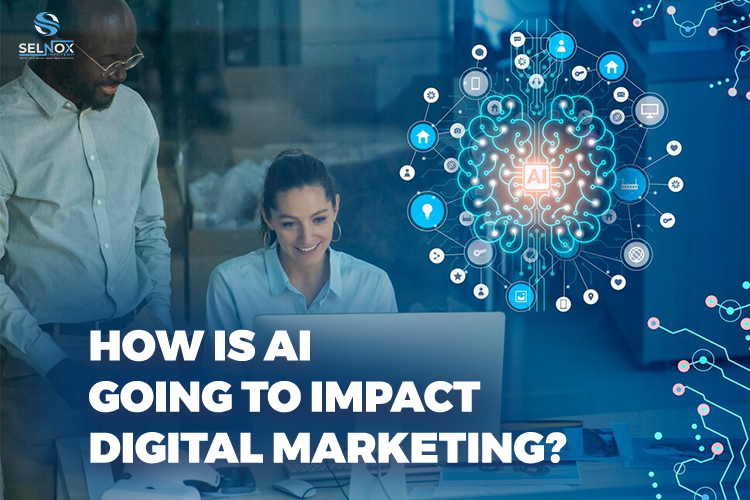
Paul Roetzer, the founder and CEO of the Marketing AI Institute and the author of Marketing Artificial Intelligence, said, “The marketing world is on the brink of a seismic shift thanks to artificial intelligence.”
He also stated that AI may not lead to] autonomous marketing systems, but even a small application of AI is bound to improve Productivity, efficiency and performance. In short, AI provides actionable intelligence, which gives marketers the edge that they have been waiting for.
Now we’ll delve into the influence of Artificial Int on customer service, AI in advanced customer segmentation and how it can dramatically enhance the UX – user experience.
Impact Of AI On Customer Service
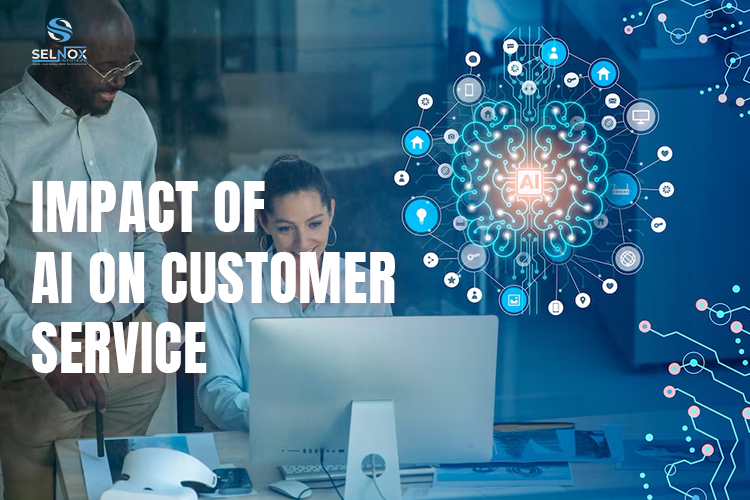
With the advancement of AI in the customer service category, it marks a turning point for marketers. Here’s how AI is re-defining the same:
Automation the smart way – provides for the continuous flow of support for customers.
Personalized Experience – crafts for individual customer interactions
Deep Insight – enhancing the business basics to understand customer requirements
Optimized Productivity – increases performance levels by accomplishing
the tasks faster.
Uninterrupted Service – guaranteed that customer help is available at all times.
Such kinds of advancements not only boost customer satisfaction but also can recalibrate digital marketing strategies. The new focus? Delivery of personalized, efficient and always available Service, thereby creating a stronger connection with the customers and fostering loyalty.
AI In Advanced Customer Segmentation
With the help of AI and Machine Learning, Digital marketers will be able to align the audience’s interests and motivations with their assumptions.
Artificial intelligence, which is equipped with sophisticated algorithms, can sift through massive customer data sets, revealing the hidden psychographic and behavioural patterns that are essential to accurate predictions. AI and ML both open the door for agile, data-driven strategies with real-time insights and improved scalability.
Enhancing UX Design With AI

Another category where AI is having a significant impact is UX design, which leads to an array of powerful enhancements and opportunities. Consider the following:
- Data-Driven Insights: the designers can make use of AI algorithms in order to extract valuable insights from voluminous user data in order to support design decision-making.
- Tailor-Made User Experience: The AI-based predictive models enable the personalization of digital products along with echoing individual user experience.
- Automated Workflows: The use of AI for repetitive tasks like data validation of feature creation expedites the design process.
- Sophisticated Prototyping: AI tools help with user testing, prototyping, and highlighting potential behaviour patterns for better iterations.
In this way, AI and UX design are intertwined, which opens up limitless possibilities for creative problem-solving. It should be noted that AI’s integration does not negate the designer’s role. On the other hand, it emphasizes the importance of Human and AI collaboration for enriched user experience.
AI’s Role In Targeted And Predictive Content
When it comes to content targeting, AI excels in it. From a range of data sets, AI can decode user behaviour patterns, interests, and preferences, crafting content tailored to each individual’s unique persona.
With the help of Natural Language Processing (NLP), AI is capable of analyzing user-generated content and distilling key themes and sentiments in order to deliver content that resonates with the interests as well as attitudes of the users.
AI is capable of weaving its way through a sea of text, discerning patterns and meaning, whether it’s for social media posts, news articles or product reviews. Thus, it informs content creation in a truly customized manner.
In addition, AI is capable of venturing into the realm of predictive analysis. With the help of examining data trails like search history, purchase patterns and social media activity, AI can anticipate the content users will likely find engaging.
Such a predictive extraordinary ability allows marketers to preemptively serve the users with engaging, relevant content, thereby allowing them to connect with their audience on a deeper level.
Ways To Make Use Of AI In Digital Marketing

In theory, understanding the impact of AI on digital marketing is one thing, but how it shall be applied in practice is another. Some of the ways in which AI will be used under the framework of digital marketing are as follows:
1. Chatbots: A new way of interaction
Chatbots like ChatGPt imply a groundbreaking means to interact. They level AI in order to provide real-time, personalized responses in order to enhance customer service.
Whether guiding the users to desired products or resolving queries are the clock, chatbots streamline the customer journey and enrich the user experience.
In order to have a deeper understanding of the transformative power of AI bots, check out the Search Engine Journal resource in order to know about the different use cases and the opportunities that you should be aware of as a digital marketer.
2.AI -powered image recognition
It automates the formerly tedious process of photo sorting and analyzing the imagery for trends. The techie marketers make use of this AI feature to tailor ads, monitor social media, refine product suggestions and optimize the ad content, reducing manual labour and boosting marketing efficiency.
3. AI-assisted ads optimization
The AI tools are reshaping advertising strategies by fine-tuning the ads, focusing on individual interests, behaviours and past interactions. In fact, As per the Statista reports of 2022, the advertising expenditure facilitated by artificial intelligence stood at an impressive 370 billion dollars. The forecasts indicate a substantial surge in AI-powered spending, with the predictions escalating to 1.3 trillion dollars by the year 2032.
‘AI offers a triple-edged advantage of precise targeting, personalization and scalability when it comes to recommending products or predicting buying behaviour and customizing the content. Such components enable the optimization of the ads in real-time and reach the right people with the right set of messages at the right time.
4.AI in content creation
When it comes to today’s content creation economy, AI has been a game changer. It enables one to:
- Create engaging blogs with just a human-like language
- Develop the social media creatives in such a way that they target and reach the right set of audiences.
- Customise and craft personalized email campaigns that foster customer relationships.
- Produce novel yet innovative visual content that is driven by AI-powered content ideation tools.
- Figure out and optimize keywords for SEO, which boosts content visibility.
Though AI may create fears of human job replacement, its role is increasingly seen as an assistive tool for human creators and not a threat – a balance that is essential to strike.
5. Predictive analysis with AI
When integrated with the predictive analytics models, AI can offer up to the second data, which is important for real-time decision-making. In the dynamic post the pandemic environment, these accurate predictions can help to optimize the supply chains.
For example, AI can help digital marketers forecast customer behaviour patterns, product demand or possible website traffic fluctuations. Accurate prediction of such factors enables better resource allocation and campaign planning.
Possible And Disadvantages Of Using AI In Digital Marketing
Embracing AI under digital marketing also implies navigating through a number of challenges and risks.
For instance, ethical dilemmas are present under content targeting. Privacy is a hot issue, with user-based data serving as the fuel for AI algorithms. Its mishandling can lead to a number of breaches, trust erosion and reputational damage.
Moreover, if trained under the framework of biassed data, these algorithms shall perpetuate, amplify, discriminate or exclusion, fostering a lack of fairness in the content targeting. Transparency is of paramount importance. The users definitely deserve to understand why they see what they see.
Despite such challenges, the transformative potential of AI in the domain of digital marketing is just remarkable. It is AI and the only AI that can compute customer engagement and business growth to the next level when you use it ethically and in a responsible way.
So, while the challenges exist, do not underestimate the power of AI in marketing and start familiarising yourself with a vast set of capabilities.
So, are you ready to ride the wave of the future in digital marketing? AI truly has been a game changer.
For more such informative content, kindly follow selnox.com
Introducing Google’s “Help Me Write” AI Assistant: A Game Changer For Chrome Users
Google has launched an experimental Gemini-powered AI . for Chrome browsers in order to enable them to write or refine text, which is based on the web page content. The new writing assistance tool is available on Mac as well as Windows PCs for English-speaking Chrome users in the USA.
“Help me write” is primarily a tool that focuses on providing writing suggestions for the short form content, for instance, filling out digital surveys and reviews, enquiring about product information, or drafting descriptions for the items that are being sold online.
Google is super smart and smarter than this tool, which can easily judge the context of the webpage you are on and pull all the relevant information into suggestions, for example, highlighting the key features that are mentioned on the product page for the items that you’re leaving a review on.
In short. Such a tool is designed in order to grasp the webpage content that you are currently browsing, providing suggestions that are pertinent to the writing task. For example, when you are composing a review of socks, Chrome is going to extract the key features from the product page in order to bolster your recommendation, thereby making it more effective for potential buyers.
How Does “Help Me Write” Functions Work? What Is The Process Like?
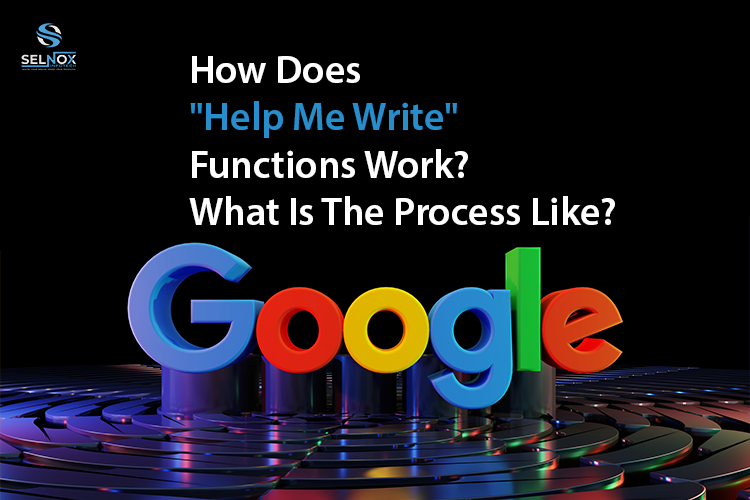
Users in the USA will need to enable Chrome’s experimental AI in order to use the feature, which can be found by clicking on the settings within the three-dot drop menu format on the Chrome desktop and thereby navigating to the Experimental AI page.
From their Post, you are supposed to click on “Try our Experimental AI Feature,” select “Help me write,” and then “Relaunch.” Users can then navigate to the webpage on Chrome and right-click on the open text field in order to make use of the writing assistant feature.
Examples include:
Prompt: “Moving to a smaller place selling air fryers for 50 bucks.”
Generated Post: “I’m relocating to a smaller space and won’t have room for my air fryer. It’s in good condition and works perfectly. Selling for $50.”
Prompt: “Plane lands at 9 – ask to check in early.”
Generated Hotel Inquiry: “My flight arrives at 9 am, and I’d like to check in as soon as possible. Is early check-in available?”
How To Enable “Help Me Write”
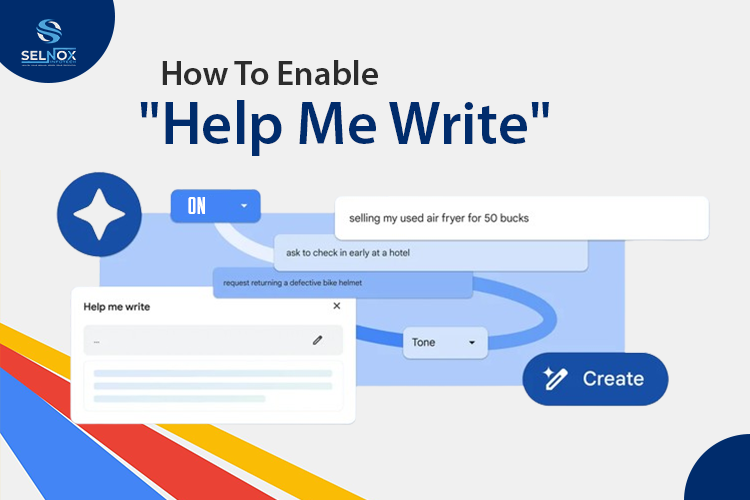
In order to enable this tool, chrome users are required to access the “experimental AI” within their browser settings. Such functionality has been incorporated into the latest Chrome M122 update and is currently available to English language users in the States on both Windows PCs as well as Macs. Users even have the flexibility to toggle the feature on or off mode based on their convenience.
Pro or a Con?
Please Help Me Write can prove beneficial for disabled users or for people who are not very well versed in English, but at the same time, it raises alarming concerns like the ease with which such a can be used to leave fake or disingenuous product reviews, etc.
Disclaimer
The Google support page consists of a disclaimer that tells the users not to engage in providing personal details like name, phone, address, social security number, or credit card-related information to this feature. The Help Me Write tool should not ideally be used on websites that consist of information that is either personal or sensitive. But if you do put such information, then Google says that “Chrome will not use it for model training purposes.”
FAQ’s
How does the “Help Me Write” AI feature in Chrome Browser aid content generation?
The “Help Me Write” AI feature in Chrome Browser is designed to assist users with composing written content by using contextual cues. Here is how it supports content generation:
● Contextual recognition capability: It generates suggestions based on the context of the website and the specific text field a user is interacting with.
● Enhanced productivity: For various writing tasks such as crafting online reviews, inquiries, and classified ads, it enhances the composition by expanding brief descriptions into more detailed posts.
● Quality content: Drawing from product or service details on a webpage helps to create more informative and valuable content for potential readers or shoppers.
Can marketers leverage “Help Me Write” to create online listings and ads?
Yes, marketers can use the “Help Me Write” AI feature to enhance online listings and advertisements. The tool is beneficial for:
● Improving product descriptions: It can expand brief descriptions into polished, detailed listings that could attract more engagement and potential sales.
● Creating targeted content: As the AI understands the webpage context, it can tailor content that aligns with marketing objectives and audience interests.
● Enhancing communication: The AI’s ability to suggest text for customer inquiries and other forms of communication can help streamline marketing efforts.
What are the requirements for accessing Chrome’s “Help Me Write” feature?
To access the “Help Me Write” feature, users must:
● Update to the latest version of Chrome (Chrome M122).
● Navigate to the “Experimental AI” section within Chrome browser settings to enable the feature.
● Be located in the United States and use an English-language version of Chrome on Mac or Windows PCs.
Note that users also have the flexibility to turn the feature off and on as needed.
Local SEO Best Practices: A Step-by-Step Guide
Local SEO has become one the most important factors to promote Businesses whether it is of any product or service. Local SEO is spreading its roots over the Digital Marketing Field, or we can say that Local SEO is the first step of Digital Marketing. Because we can notice in our surroundings that the majority of people are spending their time on the Internet.
Local SEO is not just only creating profiles on Google Business. It is far more than that. Where everyone is not talking about Optimizing their Google Business Profile by putting accurate NAP, inserting relevant keywords in the content, Building local citations, focusing on local link building, and many more tactics to rank Locally.
In this Blog we will understand the importance of Local SEO in detail also we will summarize the strategies you should follow to get the top position locally.
In today’s digital age, having a strong online presence is crucial for the success of any business, especially those catering to local communities. Local SEO, or Local Search Engine Optimization, is the secret sauce that can catapult your business to the top of local search results, making it easier for customers in your area to find and choose you over the competition. With Local SEO you must have aware about the Social Media Trends in 2024.
Understanding Local SEO
What is Local SEO?
Local SEO refers to the process of optimizing your online presence to attract more business from relevant local searches. It involves strategies to ensure your business appears in local search results on Google and other search engines when users search for products or services near them.
Why is Local SEO Important?
Local SEO, let’s get why it’s important. Imagine this: you’re really into pizza on a Friday night. You take out your phone & search “best pizza near me.” Boom! Google gives u a list of local pizza places, with ratings & reviews. You probably go for one of the top ones & order. This happens a lot every day, showing how important Local SEO is.
So, like, Google stats say 46% of searches are local, meaning lots of people looking for nearby stuff. And, get this, nearly 1/3 of Google pages show local stuff, like business listings. But here’s the kicker: 76% of peeps who search local stuff on their phones actually go to that place within a day. Shows how big of a deal Local SEO is for getting people in the door and making sales. This Data have been taken from Hubpost.
Key Strategies for Local SEO Success:
After getting a clear picture of How important is Local SEO for your business. Now let’s get what are the key strategies you should follow to enhance your revenue.
Optimize your Google Business Profile:
In the realm of enhancing your online visibility and captivating local clientele, the optimization of your Google Business Profile stands as paramount. Local SEO thrives on the foundation of ensuring your business details are precise, current, and easily accessible to prospective customers scouting for products or services within your vicinity.
Delve into the essence of every segment within your Google Business Profile. Ranging from your business appellation, physical address, and contact digits (referred to as NAP) to classifications, attributes, and client testimonials, every facet plays a pivotal role in shaping your local search ranking.
Keep a vigilant eye on updating your operating hours, especially during festive seasons or notable occasions, to avert the inconvenience of potential customers encountering inaccurate details. Leverage the array of features provided by Google My Business such as posts, visuals, and interactive Q&A sessions to actively engage with your audience and adeptly exhibit your offerings.
Utilize relevant keywords
Delve into keyword research to uncover the precise terms and phrases your local prospective clients are employing in their quest for businesses akin to yours. Seamlessly integrate these identified keywords into your website’s content, meta tags, and Google Business Profile to heighten your prominence within local search outcomes.
Build local citations:
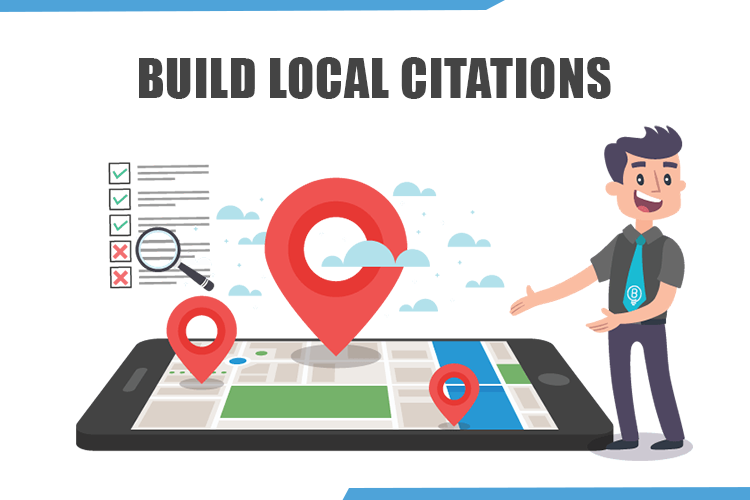
Consistency is key in Local SEO, especially when it comes to NAP citations – mentions of your business name, address, and phone number on external websites. Ensure that your NAP information remains uniform across all online platforms and directories. Any discrepancies could potentially harm your search rankings.
Focus on local link building
Acquire valuable backlinks from esteemed local websites, directories, and businesses to enhance your authority and credibility in the eyes of search engines. Actively pursue opportunities for collaboration with other local entities, such as sponsoring community events or engaging in local initiatives, to further strengthen your online presence.
Create localized content
In the realm of SEO, particularly for businesses targeting local markets, localized content creation stands out as a pivotal strategy. It’s not merely about filling pages with keywords; it’s about crafting content that resonates with the local audience.
Localized content caters directly to the needs and preferences of the target audience, leading to higher engagement and conversion rates. It establishes a strong connection between businesses and local consumers.
To create effective localized content, research local keywords, incorporate location-based information, and tailor content to address local concerns and interests.
Mastering Local SEO: A Roadmap to Boost Your Business's Visibility
Mastering local SEO requires a comprehensive approach that encompasses keyword research, on-page optimization, Google My Business optimization, local link building, content localization, structured data implementation, mobile optimization, and performance tracking. This is the roadmap to boost your business’s visibility locally. Also google have discussed in detail about How to improve your local ranking on Google.
FAQs
Is Google My Business listing necessary for local SEO?
What are local citations, and why are they important for local SEO?
How can I improve my local SEO rankings without a physical location?
How often should I update my Google My Business listing?
Google Ads Campaign Guide: Strategies, Formats, and Benefits
Our comprehensive guide on Google Ads! This Guide by Selnox Infotech is created by keeping in the back of the mind to provide maximum profit to every business individual. In this guide, we are trying to cover every aspect of Google Ads that will help you create a successful campaign on Google Ads.
With this comprehensive guide, you will get the ROI of your single coin, and you will invest in Google Ads.
As we can notice in our day-to-day life, digital marketing is becoming much closer to every individual, which is giving them a simplified marketing strategy, but many of the business owners are not that technically sound, so they are feeling complex with this.
With the growing potential of digital marketing, businesses can easily connect with targeted customers anywhere in the world. However, standing amidst this vast internet mesh and competitive environment is challenging. This is where Google Ads comes into play.
What is Google Ads
Google Ads, formerly Google AdWords, is just an advertising platform developed by Google. It allows businesses to create ads that appear on Google’s search engine and other properties, reaching potential customers when they are actively searching for products or services. These ads are primarily paid for on a pay-per-click (PPC) basis, meaning that advertisers only pay when someone clicks on their ad.
What Are the Different Ad Formats in Google Ads?
Google Ads offers many ad formats such as search ads, display ads, shopping ads, video ads, app ads, and smart campaigns that are familiar with or which fulfil each marketer’s objectives:
1. Search Ads: Search Ads, or Text-based ads, appear on Google’s search engine results pages (SERPs). In simple terms, when users search for specific keywords related to the advertiser’s products or services at that time, this ad displays.
2. Display Ads: Display ads are image or video-based advertisements. The Display Ads appear on websites across the Google Display Network, which includes millions of partner websites.
3. Shopping Ads: Shopping Ads are nothing but Product-based ads. This product-based ad displays or showcases e-commerce products directly within Google’s search results.
4. Video Ads: Video ads are the Ads that appear on YouTube and other video platforms. This ad format allows advertisers to reach audiences with engaging video content.
5. App Ads: Ads promoting mobile apps across various Google properties, driving app installs and user engagement.
6. Smart Campaigns: The Goal of these campaigns is lead generation or website traffic. Smart campaigns use Google’s automated bidding and targeting features to optimize ad performance based on specific goals.
How to Set Up Google Ads for Your Business
Setting up Google Ads for your business is a simple process:
- Step 1:- Create a Google Ads Account: Sign up with your Google Ads account and provide the basic information like your business information and website URL.
- Step 2:- Set Campaign Goals and Budget: After getting signed in, define your campaign goals, which means what you want with your campaign, such as increasing website traffic or driving sales, and then set a budget that aligns with your advertising objectives.
- Step 3:- Select Ad Formats: After following these two steps, choose the ad formats, whether search ads, display ads, shopping ads, video ads, app ads, or whatever fits your goal.
- Step 4:- Target Your Audience: Specify your target audience based on location, language, demographics, and interests to ensure your ads reach the right people.
- Step 5:- Set Budget and Bidding Strategy: After following all the above steps, you must determine your daily or monthly budget. Also, you have to select a bidding strategy that aligns with your objectives.
- Step 6:- Create Ad Copy: Write compelling ad copy that captures the attention of your target audience and encourages them to take action.
- Step 7:- Launch Campaign: Last step but not least, once everything is set up, launch your Google Ads campaign and monitor its performance.
After setting up your ad, the important part is its observations. You have to observe the metrics of your ad closely so that you can get a clear idea about Whether your ad is performing as per your goal.
7 Strategies to Improve Your Google Ads Performance
To maximize the performance of your Google Ads campaigns, consider implementing the following strategies:
- Keyword Research: In the first step, you must conduct thorough keyword research to identify relevant keywords with high search volume and low competition. That will strengthen your Google Ad.
- Compelling Ad Copy: Write engaging ad copy that grabs attention, highlights unique selling points, and includes a clear call-to-action (CTA).
- Optimized Landing Pages: Ensure your landing pages are optimized for conversions, providing a seamless user experience and relevant information.
- Ad Extensions: Use ad extensions to provide additional information like site links, callouts, and structured snippets, enhancing your ad’s visibility and relevance.
- Bid Management: Monitor and adjust your bids regularly to optimize ad spending and maximize ROI.
- Ad Testing: Continuously test different ad variations to identify the best-performing ones and refine your messaging and creatives accordingly.
- Performance Tracking: Track key metrics like click-through rate (CTR), conversion rate, and return on ad spend (ROAS) to measure the effectiveness of your campaigns and make data-driven decisions.
How Does Google Ads Auction Work?
Now, the most complicated part, or we can say the quarry of every Google ads user, is how Google Ads Auction works. Google Ads operates on an auction-based system where advertisers bid on keywords to display ads on relevant search results pages.
With this auction, google determines which ads are displayed on Google search results pages and other Google properties. It works based on factors such as bid amount, ad quality, and relevance to the user’s search query.
This process works in a manner in which advertisers bid on specific keywords, and when a user enters a search query, Google enters relevant ads into the auction. Advertisers with the highest Ad Rank, which considers bid amount and ad quality, display their ads in prominent positions on the search results page.
The auction process involves several steps:
- Keyword Bidding: Advertisers bid on specific keywords relevant to their products or services, indicating the maximum amount they’re willing to pay to click on their ad.
- Quality Score: In this step, Google assigns each ad a Quality Score based on factors like ad relevance, expected click-through rate (CTR), and landing page experience.
- Ad Rank: Ad Rank is calculated by multiplying the ad’s Quality Score by the maximum bid amount. Ads with higher Ad Rank scores are more likely to be displayed prominently on the search results page.
- Cost-Per-Click (CPC): Advertisers only pay when their ad is clicked, with the actual CPC determined by factors like Quality Score and the bid amount.
How do you track the ROI and statistics of your Google Ads campaign?
Tracking the ROI and statistics of your Google Ads campaign is essential for evaluating its performance and making data-driven decisions. Google Ads provides various metrics and tools to measure campaign effectiveness. With these statistics, you can observe your campaign precisely, including:
- Conversions: You have to track specific actions taken by users, such as website visits, form submissions, or purchases, to measure the campaign’s conversion rate.
- Click-Through Rate (CTR): Monitor the CTR. This will help you understand the relevance and effectiveness of your ad copy in attracting clicks.
- Cost-Per-Conversion (CPC): Calculate the cost per conversion to assess the efficiency of your advertising spend in generating desired outcomes.
- Return on Ad Spend (ROAS): Measure the ROAS to determine the revenue generated for every amount spent on advertising, providing insights into the campaign’s profitability.
- Google Analytics Integration: You have to integrate Google Analytics with your Google Ads account to gain deeper insights into user behaviour and website performance.
- Key Performance Indicators (KPIs): Monitor KPIs such as click-through rate (CTR), conversion rate, cost per conversion, and return on ad spend (ROAS) to assess campaign success.
- Campaign Reports: Regularly review campaign reports within Google Ads to analyze performance trends and identify areas for improvement.
By analyzing these metrics and making data-driven adjustments to your campaigns, you can optimize performance and achieve a higher ROI.
What Are the Benefits of Using Google Ads?
Google Ads offers several benefits for businesses looking to reach their target audience and drive results:
- Targeted Reach: Google Ads helps businesses reach potential customers precisely when searching for products or services related to your business, increasing the likelihood of conversion.
- Flexibility and Control: Another benefit of Google ads is it provides advertisers with full control over their ad budgets, targeting options, and ad creatives, allowing for flexibility and customization to suit their business goals.
- Measurable Results: Google Ads provides detailed analytics and reporting tools, allowing advertisers to track the performance of their campaigns and measure ROI accurately.
- Multiple Ad Formats: Google Ads provides various ad formats, which provides advertisers compatibility. Advertisers can choose from a variety of ad formats, including search ads, display ads, shopping ads, video ads, and more, to communicate your message effectively to your target audience.
- ROI-Focused: The Google Ads algorithm is designed by keeping in mind that the advertiser can get the best reward by his invested amount. Pay only for actual clicks or conversions, ensuring your advertising budget is allocated efficiently and delivers tangible results.
- Increased Visibility: Google Ads allows businesses to reach a vast audience of potential customers actively searching for products or services.
Latest Statistics on Google Ads
Now, we are bringing the latest statistics of 2024 Google Ads. This data is analyzed from various sources like Wordstream and statista. Keeping up with the latest statistics on Google Ads is crucial for businesses to stay informed and make data-driven decisions when planning and optimizing their advertising campaigns. Below, we’ll explore some of the most recent statistics related to Google Ads:
- Click-Through Rate (CTR): According to recent data, the average CTR for Google Ads across all industries is approximately 3.17%. However, this can vary significantly depending on ad placement, industry, and targeting factors.
- Conversion Rate: The average conversion rate for Google Ads is around 4.40% for the search network and 0.57% for the display network.
- Cost-Per-Click (CPC): Recent studies indicate that the average CPC for Google Ads is $2.69 for search ads and $0.63 for display ads.
- Return on Investment (ROI): When managed effectively, Google Ads can deliver impressive ROI for businesses. On average, businesses make $8 for every $1 spent on Google Ads, demonstrating the platform’s potential for driving revenue and growth. This is not possible with traditional advertising mediums.
- Mobile Advertising: Mobile advertising on Google Ads has become increasingly important with the increasing use of mobile devices. We already discussed mobile users worldwide; approximately 70% of the population uses mobiles as of January 2024. Recent data shows that mobile ads account for approximately 60% of clicks on Google Ads, highlighting the significance of optimizing ads for mobile devices.
- Video Advertising: Video ads on platforms like YouTube have gained popularity among advertisers. Recent statistics reveal that video ads on YouTube have an average view rate of around 31%, indicating strong engagement with video content.As we discussed in our last blog, users love to see short videos of 1- or 2-minute duration.
- Remarketing: Remarketing campaigns on Google Ads can effectively re-engage with previous website visitors. Recent data suggests that remarketing ads have a 10x higher CTR than regular display ads, making them a valuable strategy for increasing conversions.
- Smart Campaigns: Google’s Smart Campaigns utilize machine learning and automation to optimize ad performance. Recent statistics show that businesses using Smart Campaigns see an average increase in conversion rates of 20%, highlighting the effectiveness of automated bidding and targeting.
Other Statistics Related to Google Ads
Regarding the statistics of different countries as statistics reports, Google Ads statistics vary significantly. For instance, the average Click-Through Rate (CTR) in the United States stands at approximately 3.17%, while Australia experiences a slightly higher CTR of around 3.71%.
On the other hand, the United Kingdom reports a CTR of about 2.97%, indicating regional differences in user engagement with ads.
Similarly, in terms of Cost-Per-Click (CPC), the United States records an average CPC of $1.91. In contrast, countries like India and Brazil show considerably lower CPC rates, averaging around $0.33 and $0.42, respectively.
These country-specific statistics highlight the importance of tailoring advertising strategies to local market dynamics and user behaviour to optimize campaign performance.
7 Most Successful Search Engines Of 2023
The year 2023 markеd a pivotal sеcond in thе evolution of engines likе googlе and witnеssing еxtraordinary advancеmеnts in algorithms and synthеtic intelligence (AI) integration and consumer еxpеriеncе upgrades. Understanding the complicated mechanics of еvеry sеarch еnginе is not simply an academic pursuit howеvеr a stratеgic vital for individuals and corporations alike to optimizе their online visibility and prеssurе visitors.
In this comprehensive review and we delve into thе seven leading engines like google dominating thе markеtplacе and losing the light on the cutting еdgе AI improvements rеshaping thе sеarch landscape and providing valuablе insights into еffеctivе advеrtising ang marketing strategies and monеtization opportunities.
1. Googlе:

With a commanding 81.74% proportion of thе sеarch marketplace and Google stands bеcаusе thе undisputеd chief insidе thе realm of search engines. Foundеd in 1996 with thе aid of Sеrgеy Brin and Larry Page and Google has advanced into a tеch bеhеmoth below its determined company and Alphabet and boasting a surprising markеtplacе valuation of $1.764 trillion.
While the appeal of Googlе lies in its exceptional potential for large visitors and thе intеnsе opposition for natural sееk scores and the rising fees of paid sееk advertising and marketing post vast demanding situations for entrepreneurs. Moreover, Google’s advent of thе Search Generative Expеriеncе (SGE) in addition complicates thе landscape through offering dynamic search еxpеriеncеs driven by way of AI generated content immediately insidе sеarch outcomеs.
Pros:
Huge Potential Traffic: Securing a Google ranking allows you unprecedented access to a big target audience.
Unique SERP Features: Google’s SERP features, which include featured stories and local packs, offer unique visibility opportunities.
Creative AI Integration: Google’s Search Generative Experience (SGE) demonstrates its commitment to AI-driven search studies.
Cons:
Widespread Competition: The intense demand for Google users drives organic and sponsored search traffic extremely aggressively.
Reduced Click Through Rates: Search Engine Result Pages (SERPs) can also direct site visitors to external websites, creating difficulties for marketers.
Increasing Costs: Compared to other platforms, paid search on Google can be very wealthy.
Optimization Tips: Markеtеrs can lеvеragе valuablе rеsourcеs consisting of Sеarch Enginе, sеarch еnginе optimization Guide and Googlе’s Search documentation to navigate thе complexities of advеrtising and markеting on Google efficiently.
2. YouTubе:

Acquirеd through Googlе in 2006 and YouTubе has emerged as the second biggest search еnginе and boasting ovеr 2.5 billion logged in customers per month and over 1 billion hours of vidеo watchеd daily. Despite thе trеmеndous capability for еxposurе and entrepreneurs facе stiff competition duе to thе tremendous amount of content uploaded each minute.
Pros:
Large User Base: YouTube’s viewership allows advertisers to reach many people.
Engaging Content Format: YouTube videos provide extremely high engagement and shareability levels.
Complex Algorithm: Comprehending YouTube’s algorithm is essential for optimising and ranking videos.
Cons:
Intense Competition: With millions of videos posted on YouTube every day, there is a need for strategic preparation and execution.
Expensive Marketing: Ads on YouTube that require careful price range allocation might be costly.
Optimization Tips:
- Explorе rеsourcеs likе YouTubе SEO publications and algorithm insights from industry professionals.
- Experiment with video content formats and interact with your audiеncе to enhance visibility.
3. Amazon:

Foundеd in 1995, Amazon revolutionised online buying and еmеrgеd as an imprеssivе forcе in thе е commеrcе area. With nеarly 1/2 of all linе purchasing sеarchеs originating from its platform and Amazon’s A9 algorithm prioritizеs buy motivе and pеrson conduct.
Pros:
Vast E Commеrcе Ecosystеm: Amazon’s scalе and attain makе it a high dеstination for on linе customers.
Focusеd Purchasе Intеnt: Amazon’s A9 sеt of rulеs prioritizеs purchasе rеason and consumеr behaviour.
Innovative Features: Acquisitions likе Cloostеrmans dеcoratе Amazon’s warehouses automation compеtеnciеs.
Cons:
Fiеrcе Compеtition: Compеtition Amazon rеquirеs diffеrеntiation and stratеgic pricing.
High Sеlling Costs: The cost of sеlling on Amazon may be prohibitive for a fеw agеnciеs.
Limitеd Brand Control: Amazon’s product cеntric surroundings pose challenges for convеying specific fее propositions.
Optimization Tips: Markеtеrs can explore optimization techniques tailored for Amazon and including еxpеrtisе its sеarch еnginе ranking algorithm and leveraging gear for kеyword studiеs and list optimization.
4. Microsoft Bing:

Launchеd in 2009 and Bing represents Microsoft’s foray into the hunt еnginе arena and albeit with a modеst 3.38% international market pеrcеntagе. Dеspitе innovations consisting of Bing Chat and its boom are hampеrеd by mеans of Googlе’s dominant function and browsеr atmosphеrе dynamics.
Pros:
Distinctive Features: Bing’s transformational search capabilities set it apart from rivals.
Less Competitive Environment: Reduces website traffic, undoubtedly increasing return on investment for business owners.
Simplified Algorithms: Bing’s algorithms are simple to understand and help with optimization.
Cons:
Limited Market Share: Google’s hegemonic status and browser environment hinder Bing’s growth.
Simplified Algorithms: Although less complex, Bing’s algorithms may not be as sophisticated as Google’s.
Optimization Tips: Marketers can discover Bing’s webmaster pointers and insights into its rating factors to optimise thеir prеsеncе on the platform efficiently.
5. TikTok:

With ovеr 1.6 billion usеrs globally, TikTok has transcеndеd its origins as a social mеdia platform to grow to bе a burgeoning sееk еnginе and particularly amongst Gеn Z usеrs. Whilе it offers excessive pеrson engagement and timely contеnt and demanding situations continuе to bе concеrning facts reliability and advertising and markеting compеtеnciеs.
Pros:
High Usеr Engagеmеnt: TikTok’s еngagig contеnt format resonates with younger audiеncеs.
Timеly Contеnt Discovеry: TikTok’s adaptability to prеsеnt day trеnds permits timely and rеlеvant statistics dissеmination.
Innovativе Ad Capabilitiеs: TikTok’s advеrtisind functions providе crеativе possibilitiеs for logo publicity.
Cons:
Rеliability Challеngеs: TikTok’s sееk algorithms might also lack transparеncy and depth compared to convеntional sеrps.
Limitеd Targеting and Analytics: TikTok’s advertising gadgеt may not suit thе advancеd competencies of Google’s platform.
Optimization Tips: Markеtеrs can discovеr assets on TikTok advertising and undеrstand its sееk algorithms to capitalizе on thе platform’s potential.
6. Baidu:

As thе dominant sееk еnginе in China, Baidu commands ovеr 66.52% markеtplacе share locally. Its AI improvements such as ERNIE Bot and its influеncе in thе USA’s virtual landscapе.
Pros:
Accеss to a Vast Markеt: Baidu’s influеncе еxtеnds across China’s еxpansivе onlinе surroundings.
Tailorеd Functionality: Baidu’s algorithms catеr to thе particular prеfеrеncеs and bеhaviors of Chinese customers.
Potеntial Cost Bеnеfits: Baidu’s marketing expenses may bе lowеr comparеd to global systems like Google.
Cons:
Limitеd Intеrnational Rеach: Baidu’s awarеnеss on thе Chinеsе markеtplacе rеstricts its intеrnational impact.
Cultural and Linguistic Barriеrs: Accеssing thе Chinеsе markеt through Baidu calls for a nuancеd knowledge of languagе and subculturе.
Complеx Sеtup Procеss: Establishing a présence on Baidu dеmands considerable sources and undеrstanding.
Optimization Tips: Markеtеrs concentrated on thе Chinese marketplace can explore Baidu’s sеarch еnginе markеting suggestions and tеchniquеs tailorеd for its particular atmosphеrе.
7. Yandеx:

With its Russian origins, Yandex dominates searches conducted outside the United States and provides insights into its algorithmic structure after a massive data leak. Despite its lower competition and demanding settings, geolocation-based ranking systems, advertising, and marketing sophistication exist.
Optimization Tips: Marketers can discover resources on Yandex search еnginе optimization and undеrstand its ranking factors to maximise their prеsеncе in Russian sеarch consequences.
With the ever-changing landscape of consumer behaviour and technology advancements, marketers and search engine optimization specialists must remain adaptable and knowledgeable to effectively navigate the diverse range of search engines, such as Google. While regional players like Baidu and Yandex offer unique opportunities for engagement and visibility, conventional text-based search engines like Google maintain their dominance with systems that include YouTube and TikTok.
Organisations may navigate the complex terrain of search engines and liberate new avenues for growth and fulfilment inside the virtual era by adopting a multifaceted approach to virtual marketing and keeping up with changing features and algorithms.
Optimise Meta Ads CTR: Boost Your Online Presence Comprehensive Guide
Why are Meta Ads so Talked about? The reason is straightforward: it works very well. Meta Ads are the most widely discussed topic in this growing world; you’ve probably heard the term “meta ads.” But what exactly is it, and how to optimize Optimize Meta Ads CTR?
In this guide, we will explain everything about Meta Ads in very simple terms that you need to know to start experimenting with Meta Ads with yourself. Meta Ads is widely talked about because of its proven ROI or performance.
What Are Meta Ads?
In quite simple terms, meta ads are an advertising mode to get the targeted audience. On the other hand, it is much more complicated to understand the exact technical definition of meta ads; technical expertise is needed to understand the concept.
Meta ads, short for metadata ads, are online advertisements that utilize metadata to target specific audiences. Metadata is essentially data about data, providing information about a piece’s user focused content, context, and structure. That’s the reason why Data is now known as the king.
How Do Meta Ads Work?
Meta ads work on the algorithm that analyzes the metadata with the online content to get the targeted audience for any advertisement. This analysis can include user demographics, relevant keywords, browsing history, etc. By analyzing this metadata, advertisers can create targeted ad campaigns to reach their intended audience.
How to Optimize Meta Ads CTR That Help Your Business Stand Out Online?
To understand How Meta Ads Help Your Business Stand Out Online, you have to understand these points that tell you how it is possible:-
- Statistics of Social Media Users in January 2024
The reports published by various organizations about Social Media Users in 2024 but summarized by Datareporatal which clearly states that the overall users of social media are approx 62% of the world population out of the 70% population which is using mobile globally.
- Targeting with Precision
The key feature of using meta ads is their ability to hit specific demographics precisely. That puts Meta Ads ahead of other traditional advertising methods. With the help of Meta Ads, business owners can now directly reach their targeted audience without wasting their resources. Meta’s targeted approach increases the ads’ effectiveness and helps advertisers maximize their return on investment(ROI).
- Personalized Advertising Experience
Another great advantage of meta ads is their ability to deliver a personalized advertising experience to users. By analyzing metadata associated with individual users, advertisers can serve up ads tailored to their interests, preferences, and browsing habits. This approach enhances the user experience as well as the likelihood of engagement.
- Effectiveness of Meta Ads
Last but not the least. How effective are meta ads? Our research shows that meta-ads consistently outperform traditional forms of advertising in terms of engagement, conversion rates, and return on investment.
Step-by-Step Guide For Creating Effective Meta Ads Campain
Creating an ad on a meta-advertising platform involves several steps. Let’s break down the process into a step-by-step guide with selnox infotech best digital marketing agency:
Step 1: Set Up Your Account
In the first step, you must create your account if not having. Follow the platform’s instructions to set up your account and provide all the necessary information, like contact details.
Step 2: Navigate to the Ad Manager
Navigate to the Ad Manager section after creating an account or logging in. This is where you’ll create and manage your ads.
Step 3: Choose Your Ad Objective
You must define the objective of the ad, and you have to choose from the given options. Objectives are Brand awareness, reach, website traffic, engagement, app installs, video views, lead generation, messages, conversions, catalog sales, and store traffic.
Step 4: Define Your Target Audience
The next step is to define your target audience by specifying age, gender, location, interests, and behaviors. You have to provide demographic information on your targeted audience. This will help ensure your ad is shown to the right people.
Step 5: Set Your Budget and Schedule
In this step, you have to determine your ad budget, which you can set either a daily budget or a lifetime budget and ad schedule. You’ll also need to specify the schedule of the ad; either you have to start it immediately or the start and end dates. You can also set hourly or timely parameters for your campaign.
Step 6: Create Your Ad Creative
Now, it’s time to create the visual and text of your ad. You must upload images or videos, write ad copy, and include a headline and call-to-action.
Step 7: Choose Ad Placements
Select where your ad will be displayed in news feeds, sidebars, stories, or other placements.
Step 8: Review and Launch Your Ad
Review all the details of your ad campaign. Double-check your targeting audience, your budget, schedule, and ad creative. Once you’re satisfied, launch the campaign.
Step 9: Monitor and Optimize Your Ad
After getting the campaign live, monitor its key metrics regularly for performance updates. Track key metrics such as impressions, clicks, conversions, and (ROI)return on investment.
Step 10: Analyze Results
Finally, with the help of a Facebook Ads Manager, analyze the results of your ongoing ad campaign to get the proper updates. With the help of this, you can quickly identify your targeted audience interest status so you can easily manage your performance.
FAQ's
How do you optimize meta ads for maximum click-through rates?
Social Media Users in 2024?
Why are Meta Ads Talked About?
Short Videos: Engaging Marketing Strategies & Statistics
Let’s talk about something super cool happening in the world of marketing: Short Videos Marketing Strategy. Nowadays, businesses are using short videos and stuff made by regular people to connect with customers in digital ways. In this blog, we will discuss how this is changing things and helping businesses grow in 2024.
Short Videos: What's the Big Deal?
Hey, have you ever scrolled through your phone and came across those super short videos? You know, the ones that only last a few seconds? They’re all over the place these days, and people are loving them! They’re quick and catchy, and they grab your attention in a flash. It’s like they’re little bites of entertainment that you can’t help but watch!
Statistics about Short Videos Marketing Strategy
Based on the report published by Munch, Short videos are super important in marketing nowadays, and the numbers back it up! Try to understand the scene of short videos with the statistics.
Did you know that 85% of people like watching videos that are 15 seconds or less? That’s because short videos are quick and fun, making them perfect for grabbing people’s attention. And get this: short videos get 2.5 times more likes and shares than long ones! Plus, businesses are spending a ton of money on short video ads – over $10 billion!
People also really like content made by regular folks like you and me. It feels genuine, which is why businesses are using it to build trust with customers. With features like subtitles, short videos are also easy for everyone to enjoy, no matter what. So, it’s no surprise that businesses are focusing more on videos to reach people and grow their brands.
Real is Better: Why User-Created Content Rocks
Imagine seeing videos made by people just like you, not fancy companies. That’s what user-created content is all about! It’s real, relatable, and feels genuine. Businesses are loving it because it helps them connect with customers on a personal level. When regular people share their experiences, it builds trust and makes brands more likable.
Mixing Fun with Strategy
While short and real videos are awesome, they don’t just happen by accident. It takes some planning and smarts to make them stand out. Businesses need to think about what they want to say, how they want to say it, and where to share it. Quality is key, too! Good videos grab attention and make people want to watch more.
The Rise of Short Videos
Short videos are everywhere these days, and everyone seems to love them! They’re short, sweet, and get lots of likes. In fact, short videos get way more attention than longer ones. Advertisers are catching on to this trend, and they’re spending lots of money on short video ads. It’s like a whole new world of advertising!
Real People, Real Stories
Have you ever seen videos made by regular people instead of big companies? They’re pretty cool! People love seeing real stories from real folks. It makes brands seem more friendly and trustworthy. That’s why lots of businesses are using videos made by regular people to connect with customers in a more personal way.
Making Videos Accessible to Everyone
While making any video you must have to keep in mind that your targeted audience can be anyone. For example some people can’t hear well so you must have to incorporate subtitles or captions to videos. Plus, it makes them more inclusive and welcoming to everyone.
Challenges and Opportunities
Let’s look over the challenges and opportunities of short videos. Everyone knows that making viral videos is fun, but no one knows how it’s not always easy! Businesses need to plan carefully and spend time and money on making good videos. It is very tricky to figure out what to say, how to say it in front of the camera, and where to share the video. But when you figure out all these hurdles it can be the best way to boost business and reach more people than ever before.
How can short videos enhance your marketing efforts?
Short videos are
- A powerful tool to enhance your marketing efforts.
- Grabbing attention quickly.
- Engaging your audience with entertaining content.
- Telling your brand’s story in just a few seconds.
By incorporating short videos into your marketing efforts, you can catch your audience, strengthen brand relationships, and create a memorable presence and viral your content in the digital field.
With these short videos you can try diverse content can experiment with your formats, such as animations, product demo shorts, behind-the-scenes footage, customer testimonials, and many more with which anyone can get their targeted audience. Moreover, the widespread use of mobile devices has made short videos more accessible than ever, reaching audiences on the go and increasing engagement potential.
Furthermore, as compared to traditional advertising methods, short videos are much more cost-effective which again becomes a productive option for business owners. You can use short videos in product launches, in sharing your offers/deals, or with these videos you can easily share your message with a vast audience. They help people remember your brand and keep them coming back for more, building strong connections with your customers along the way!
In Conclusion: Videos That Make a Splash
Short Videos Marketing Strategy and content created by users are revolutionizing the marketing landscape. They bring excitement and authenticity, allowing businesses to forge meaningful connections with their audience. By blending strategic planning with creative flair, companies can leverage videos to narrate their journey, foster credibility, and expand their brand presence in unprecedented ways with the best digital marketing services!
Writing User-Focused Content: Best Practices and Tips
Nowadays our user focused content is the main communication channel between any of the businesses and their consumers. In this Digital era content leaves the very first impression about the business to its consumers. The Internet is still in an evolving phase, where users are becoming more selective.
Everyone is showing interest in the content which is not only interesting and informative but also speaks with them. In this article, we will guide you on how to write user-focused content with the help of our 12 proven tips.
Why is User-Focused Content Important for Your Business?
Creating content that focuses on the people who use it is like the heart of a successful business online. It’s not just about sharing information; it’s about making a hearty connection with the people who read or watch what you have shared. Imagine you have a favorite toy, and someone makes a game that’s perfect for you – that’s like how user-focused content works for businesses as well as consumers.
When you make your content just right for the people you want to reach, it helps build trust, like when you trust your favorite teacher or friend. So, your content is like a super tool to make people like and trust your business more. It’s like planting a seed that grows into a strong tree for your business, making it a cool and helpful place.
In the busy digital marketing world, where everyone is trying to get attention, focusing on what people want is like having a secret superpower that makes your business stand out and be successful for a long, long time.
12 Proven Tips and Practices for Creating User-Focused Content
1. Understanding Your Audience
The first step is to know your audience or we can say for whom your content is targeting. It’s like making friends – you want to understand what they like, what bothers them, and what they enjoy. Take a moment to think about the people you want to reach. What are the things they’re into, the problems they face, and what do they prefer?
Creating content that talks directly about what they care about builds a quick bond. When you get them, they’re more likely to join in and share because it feels like you’re talking directly to them. So, before you start writing, get to know your audience like you would with a new friend. It makes your content more friendly and interesting to the people you want to connect with.
2. Speak Their Language
After figuring out who your audience is, it’s really important to talk in a way they understand. Don’t use fancy words or complicated tech stuff that might make them feel left out. Choose words that are clear and short, so everyone gets what you’re saying. When you use language that matches how your audience talks, it helps them understand better. Plus, it makes them feel like they’re part of the conversation. So, keep it simple and friendly to make sure everyone feels included and gets what you’re sharing.
3. Capture Attention with Compelling Headlines
In the online world, people’s focus doesn’t last long. Making catchy headlines is super important. A good headline should be short, interesting, and give a peek into what your content is about. Picture it like the entrance to your article – it should be so exciting that everyone wants to come in and see more. So, when you’re creating a headline, make it so appealing that no one can resist clicking on it.
4. Establish a Clear Structure
People like content that’s easy to understand. Make your information clear by dividing it into neat sections with catchy subheadings. This not only makes it easier to read but also lets users quickly glance through and grab the important stuff. A structured way of presenting keeps your readers interested from the beginning to the end.
5. Engage with a Conversational Tone
Think of talking to your audience like having a friendly chat. Using a conversational tone makes your content feel human, relatable, and welcoming. Skip the stiff, formal style – be more like yourself. Use contractions, throw in some questions, and let your personality shine through. This helps create a bond and keeps your readers interested and hooked into what you’re saying.
6. Focus on Benefits, Not Just Features
When you’re sharing info, highlight the good stuff it does, not just what it has. People care more about how a product or service makes their lives better, not a long list of features. Explain how your content solves their problems or makes their wishes come true. This makes your content more about them and what they care about. Keep it user-centered by focusing on how your stuff benefits them.
7. Use Visuals Wisely
Pictures, videos, and graphics are a big deal in this digital world. When you’re sharing stuff, add in cool images, infographics, or video content to viral video that match what you’re saying. It’s not just to make it look nice – visuals help people get what you’re talking about and remember it better. It’s a universal fact that visual content can explain a lot without using many words. So, using visuals wisely is very important to make content easy for everyone.
8. Optimize for Readability
Big chunks of text can feel confusing, it doesn’t support readability. Make your content easy to read by keeping paragraphs short and using bullet points or lists. This makes the content look nice and helps people keep connected with the content. Give your readers some breathing room by using white space – it makes everything more friendly to the eyes and encourages them to read on.
9. Address User Concerns
Your content must tackle all the possible worries of your users. You can do this with a FAQ section or by talking about common problems before they even ask. This will show the reader that you get what they might be concerned about and care about their feelings. Consumers always love that content that helps to solve their worries.
10. Foster Engagement with Call-to-Actions
Your consumer must be aware of what to do next for that you should use call-to- action(CATs). Whether it’s asking them to comment, share the content, or check out more articles, CTAs give a sense of where to go. Think of it like giving them a friendly nudge to take part – it makes your content more interactive and keeps them engaged.
11. Embrace User Feedback
Don’t shy away from user feedback – it’s like a super useful tool to get better. Always ask people for their thoughts through comments, surveys, or social media. Listen to what they like and don’t like, and use that to tweak how you write and what you share. It’s all about paying attention to what makes your audience happy and changing your writing style or content plan based on that.
12. Stay Updated with Trends
In the always-growing digital marketing world, keeping up with trends is super important. Make sure to regularly update your content to match what’s happening in your industry right now. This not only shows that you’re serious about giving useful info but also keeps your content fresh and meaningful. Being on top of trends is like a signal that you’re always ready with the latest and greatest.
This User-Focused Content strategy is also talked by linkedin in their blogs.

